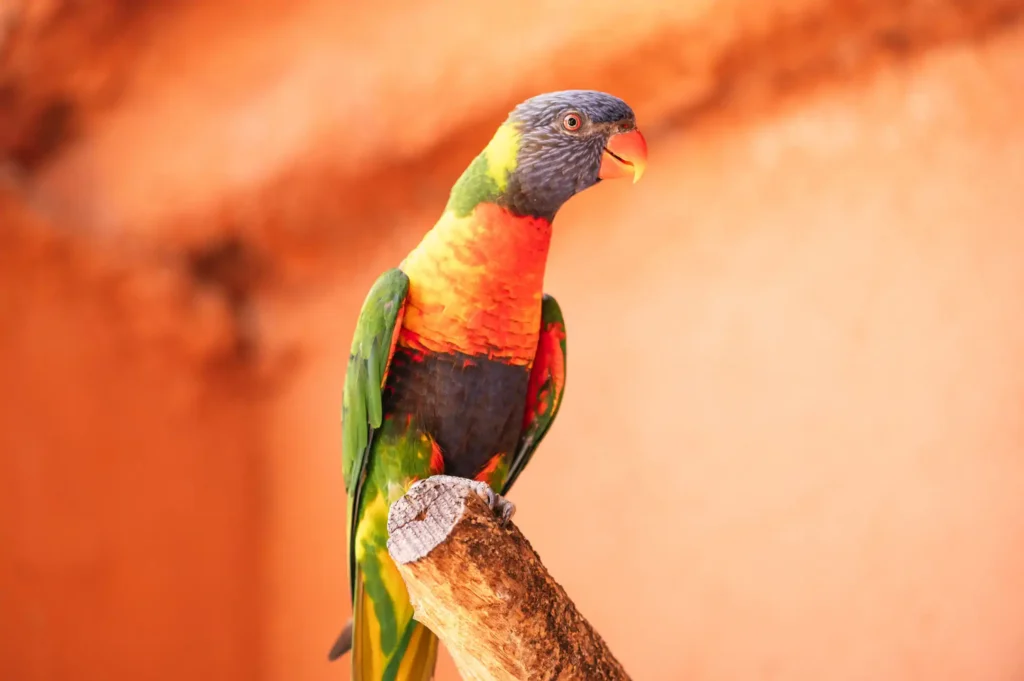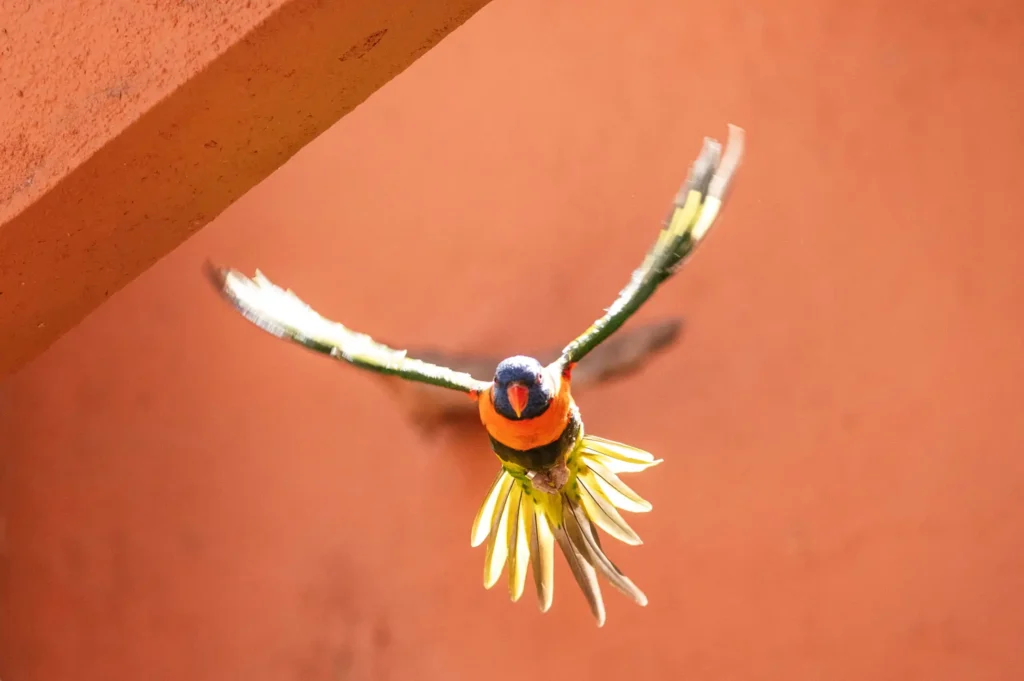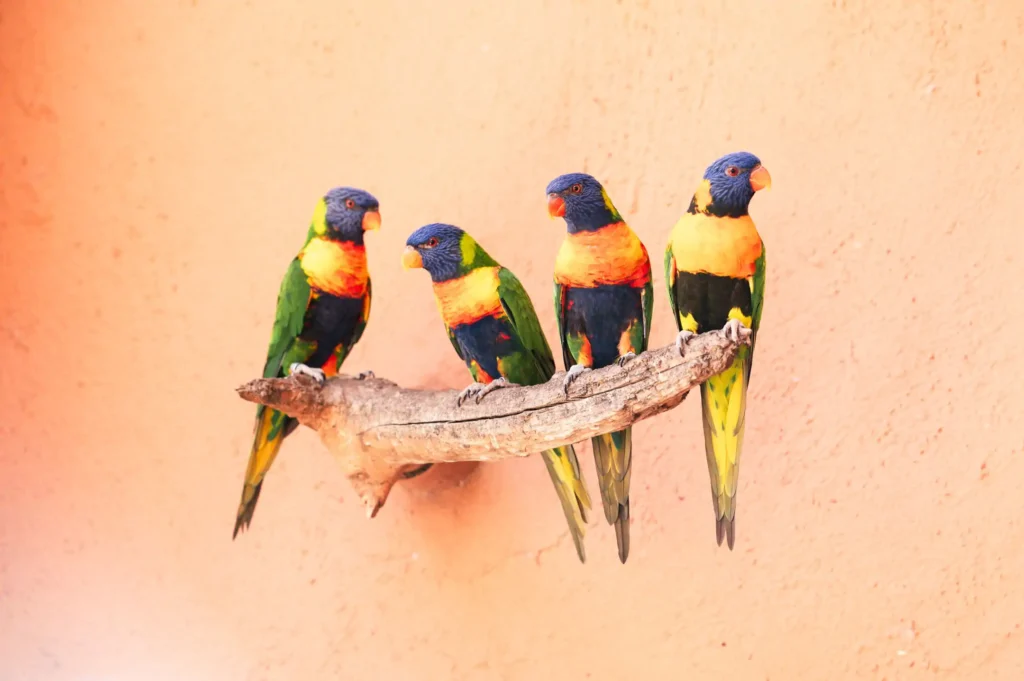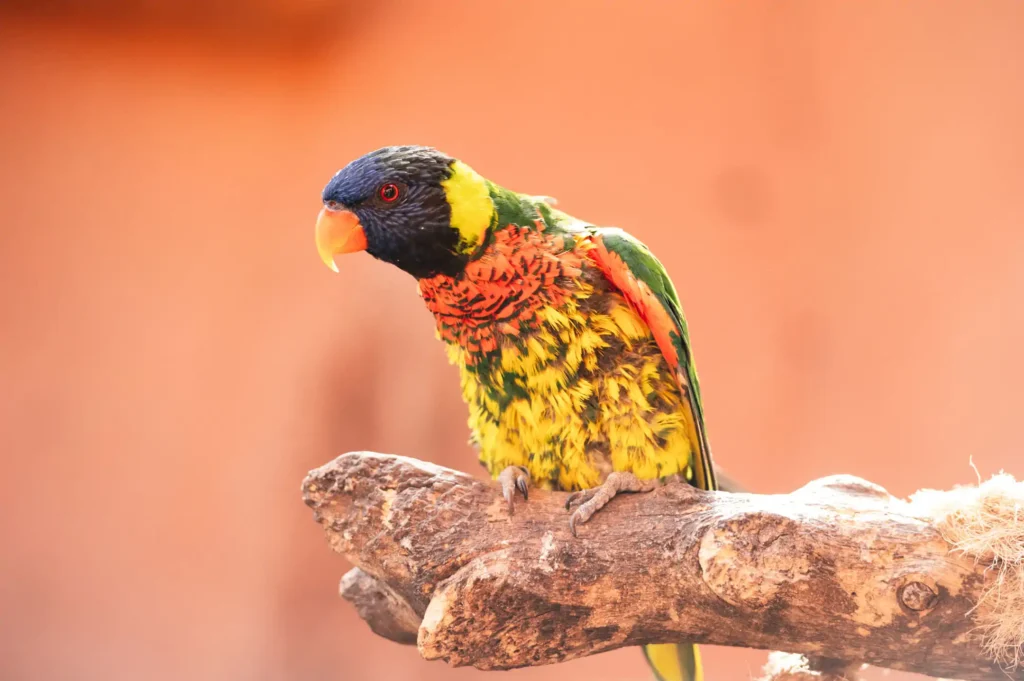Up to 6 subspecies can be distinguished according to their colour pattern.
Physical features
Their main characteristic is their plumage, where we can find all the shades of the rainbow. They vary significantly in colouring between the numerous subspecies and we find them dark blue, almost violet, on the head and belly and bright green on the back and tail, orange on the chest and beak. Some subspecies have dark markings across the chest and there is even one that is predominantly green.
They reach a length of 25 – 30 cm and a wingspan of about 17 cm, weighing between 120 and 140 gr.
Habitat
They inhabit rainforests, forests and mangrove areas in some parts of Australia, Indonesia, New Guinea, Solomon Islands, New Guinea and elsewhere.
Diet
They feed mainly on pollen and nectar, as their tongues are specially adapted to this type of diet, although they also eat fruit such as apples, grapes and pears. In captivity, it is very common to see them eating nectar from the hands of their keepers, as it is possible to gain their trust in a short space of time.
Reproduction
They use the hollows of trees to make their nest. These nests are provided with a base made of wood chips, bark, etc., deposited by both parents.
The clutches are usually of 2 eggs that incubate for a period of 23-26 days until hatching.
Behaviour
These animals live and travel in pairs, although sometimes large groups gather in flocks of up to 25 individuals, only to disperse again in the same pairs.
Threats
Habitat destruction due to urban encroachment, climate change and capture for the illegal exotic species market are the main threats to these birds.
Status and conservation
Although its populations are stable, it is still at risk due to the threats it faces and its slow reproduction. This is why it is listed in Appendix II of the CITES Convention.
Classified as Least Concern (LC) in the IUCN Red List.





